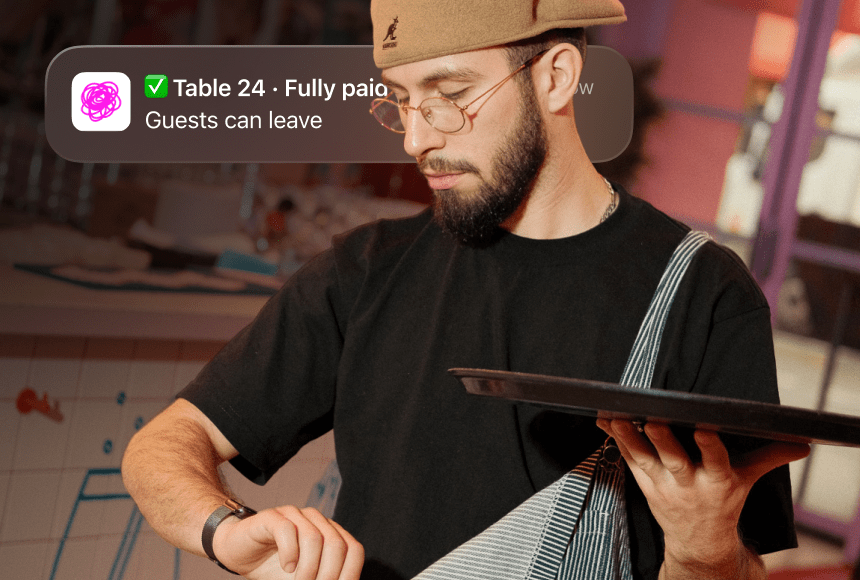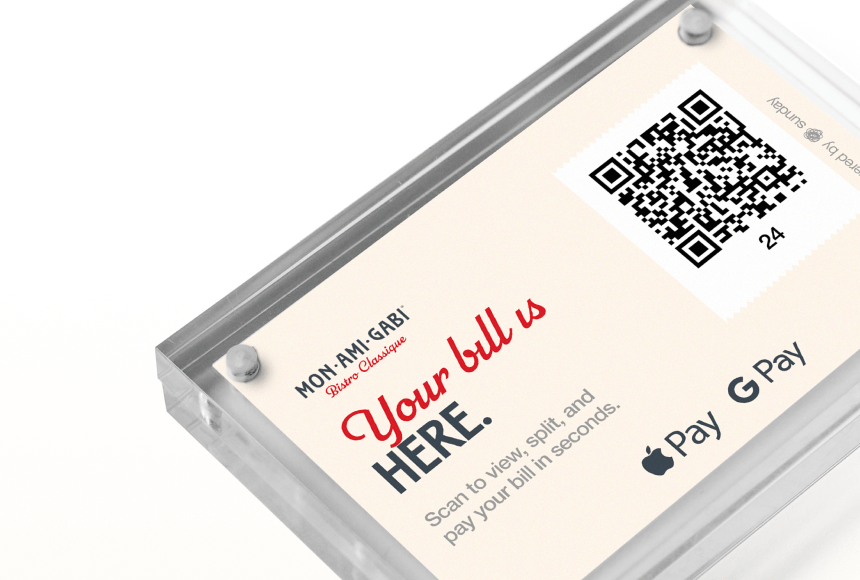
Retain Your Restaurant Team with the Right Digital Innovations
Why Restaurant Turnover Demands Immediate Attention
Ask any restaurant owner about their greatest challenges, and you’ll often hear about staffing. From recruiting qualified servers and cooks to retaining them long-term, it can seem like a never-ending carousel. The restaurant industry consistently faces one of the highest turnover rates among US businesses. According to the National Restaurant Association, average annual turnover rates can hover around 70% or more in some cases. Each departure brings additional hiring, onboarding, and training costs, plus an intangible impact on team morale—and ultimately, on the guest experience.
These high turnover rates don’t just hurt your bottom line in the short term; they also impede your ability to run a stable operation. A revolving door of staff means more time spent interviewing, training, and dealing with scheduling headaches instead of focusing on great food and memorable guest experiences. The question is, how do you reduce this churn? This article dives into the critical factors behind restaurant staff turnover and how you can address these issues through digital tools.
Understanding the Most Common Causes of Staff Turnover
Before you can solve a problem, you’ve got to understand why it’s happening in the first place. Staff turnover is rarely about just one issue—often, it’s the result of several factors boiling together in the kitchen. Let’s look at the most common causes:
- Low Pay or Tip Uncertainty – While the hospitality industry has traditionally relied on tips as a major part of compensation, unpredictable wage structures can frustrate staff.
- Lack of Career Development – Many employees see restaurant jobs as short-term stints because they don’t perceive a clear growth path.
- High Stress and Irregular Hours – Busy rushes, difficult customers, and inconsistent shifts can lead to burnout.
- Poor Communication – Mixed messages about schedules, menu updates, or policies can cause friction.
- Insufficient Training – New hires often feel overwhelmed if they’re thrown in without a robust onboarding process.
The first step to retaining employees is acknowledging the ripple effect of these elements. But awareness alone won’t turn the tide. That’s where digital tools—ranging from scheduling software to QR-based payment solutions—can help create a more positive work environment and reduce turnover.
Using Data to Drive Better Decisions
Data isn’t just a buzzword—it can be your secret weapon in retaining your team. By reviewing historical sales data, peak hours, and service bottlenecks, you can schedule with greater precision and avoid understaffing or overstaffing. Modern scheduling and workforce management platforms collect data on staff availability, overtime, and shift preferences. This data-driven approach:
- Optimizes scheduling to ensure staff feel their time is respected.
- Minimizes conflicts by allowing employees to set availability or request shift swaps digitally.
- Reduces labor costs due to better allocation of your team’s hours.
By the same token, it helps employees see fairness in how shifts and hours are assigned. Instead of pen-and-paper rotas that can lead to inaccuracies, a digital platform offers transparency at every step. This fosters trust and engagement—two underappreciated factors that keep staff around for the long haul.
Boosting Employee Morale with Scheduling and Communication Platforms
Picture it: a server checks their phone and sees an updated schedule, a new seasonal menu, and a quick reminder of today’s specials—everything is accessible in one central app. When technology is user-friendly, straightforward, and solves real pain points, it can significantly improve the overall spirit of your staff. Communication and scheduling platforms:
- Provide real-time updates on menu changes and restaurant announcements.
- Allow staff to request swaps and time off without chaotic group texts or sticky notes on a bulletin board.
- Help managers keep track of who’s on shift and avoid confusion.
When your team doesn’t have to scramble for basic information or sweat a last-minute schedule change, they’re less likely to experience burnout or frustration. The ultimate result? Fewer people walking out the door.
Empowering Staff with Technology-Enhanced Training
Training in the restaurant industry often happens in the middle of a busy shift, with new hires shadowing veteran colleagues. That works to a point, but it can also lead to inconsistent or rushed instruction. Digital training platforms let you standardize orientation modules, menu knowledge, and even upselling techniques.
On-demand videos or manuals give staff the flexibility to learn at their own pace, which is especially valuable for complex recipes or compliance requirements (like food safety regulations). Not only does this reduce the burden on more experienced team members, but it also ensures that every person gets the same comprehensive training. That consistency does wonders for confidence, performance, and sense of belonging.
Additionally, you can keep these training materials updated regularly—new menu items, updated company policies, or special promotional tactics can be incorporated quickly. The result is a workforce that feels properly prepped for the hustle of everyday service.
Leaning on Digital Payments: QR Codes and Tip Management
Getting paid promptly and accurately is essential to an employee’s sense of security—and the restaurant world is no exception. Many restaurants, especially smaller ones, still rely on manual systems for calculating tips, distributing them, and tracking staff payouts. This can lead to errors, delays, or even distrust if staff suspect mishandled funds.
Digital payment solutions, such as those using QR codes, streamline the guest checkout process while automatically tracking tips. The benefit? Staff can view exactly how much they’ve earned without waiting for end-of-week tallies. This level of transparency fosters trust.
At the same time, QR-enabled payments can accelerate table turnover, reduce the friction of handing back credit cards, and allow servers to focus on providing top-notch service. Platforms like sunday let guests pay by scanning a simple QR code at the table. After scanning, guests can tip and even leave a quick Google review from their phone. That immediate feedback loop can help managers reward excellent performance, further motivating staff.
Case Study: A Quick Look at Westside Cozy Diner
To see the impact digital tools can have on employee turnover, consider Westside Cozy Diner (a mid-sized eatery in a bustling downtown). After struggling with 60% annual turnover and staff constantly juggling shifts, the diner’s owner decided to digitize. Here’s what changed:
- Scheduling App – They adopted a workforce scheduling app that allowed employees to set availability, pick open shifts, and swap if needed. Within three months, covered shifts rose by 20%, and absenteeism dropped noticeably.
- Online Training Portal – Newly hired servers no longer had to figure things out in the middle of the dinner rush. They completed training modules online, learning the menu, mixology basics, and service steps. Managers noticed faster ramp-up times and fewer mistakes.
- QR-Based Payment & Tips – Guests began using a QR code to handle their checks, leading to faster turnarounds and more accurate tip distribution. Employee satisfaction increased, and so did the diner’s revenue, with more daily covers possible.
Within nine months, their turnover rate dropped below 40%. While they still face occasional disruptions—such is life in the restaurant biz—digital technology provided the backbone for a more collaborative work environment. The owner cites transparency and convenience as the biggest game-changers.
Digitally Streamlining Your Onboarding Process
The onboarding experience sets the tone for a new hire’s entire tenure. If day one is chaotic—missing paperwork, last-minute uniform searches, or no official welcome—it paints an unappealing picture. But with a cloud-based onboarding system:
- New hires receive invites to fill out forms online before their first day.
- A standardized checklist ensures no step is overlooked.
- Orientation videos and reference materials are right at their fingertips.
When employees see that you prioritize organization and professionalism from the get-go, they’re more likely to reciprocate with loyalty and high performance.
Encouraging Growth Through Learning Management Systems
One reason people leave jobs—especially younger employees—is the feeling that they’ve hit a dead end. By investing in a digital learning management system (LMS), you show your team you care about their professional development. An LMS can host modules on leadership, culinary skills, or advanced hospitality tactics.
When you track these modules in an LMS, you can identify who’s excelling, who might need extra support, and who might be ready for a promotion. You could even offer micro-credentials or certificates that employees can proudly showcase. This approach fosters growth and signals a distinct career path, making it likelier that your staff will stay around to see what they can become.
Stabilizing Tip Culture with Digital Transparency
For many restaurants in the United States, tipping remains the backbone of a server’s wages. But the tip pool can create tension if there’s uncertainty or suspicion around how much is collected, who gets what share, and when disbursements occur. Moving tip calculations to a digital platform removes guesswork:
- It tracks every tip, whether from credit cards or digital payment solutions like QR codes.
- Distributions are automated based on predetermined rules.
- All employees see the breakdown on their mobile devices, which reduces misunderstandings.
This setup not only ensures that each staff member is paid fairly but also reduces potential internal conflicts. Reliable systems for tip tracking are especially beneficial for busy restaurants with multiple servers and a sometimes complex front-of-house arrangement.
Improving Staff Well-Being with Employee Engagement Tools
While pay and tips are crucial, restaurant employees also crave some measure of recognition and camaraderie. An array of digital platforms now enable peer-to-peer recognition, pulse surveys, and feedback loops. For instance, a manager can send out a quick weekly pulse survey to check staff stress levels or gather suggestions.
You might set up a digital “kudos” board where employees can applaud each other—maybe for handling a stressful situation with grace or charming a tricky table. Even small acknowledgments can have a significant impact on morale—and morale often determines whether a staff member sees a long-term future in your restaurant or starts polishing their résumé elsewhere.
Measuring Performance in Real Time
Historically, performance reviews in restaurants happened only when an issue surfaced or at the end of a quarter, if at all. Digital tools let managers and owners track key performance indicators (KPIs) daily:
- Number of tables turned per shift
- Speed of service or ticket times
- Average tip percentages
- Guest feedback scores
When these metrics are readily available, employees know exactly how they’re doing—and managers have concrete numbers to use when offering feedback or praise. It removes the vagueness that can plague performance discussions and makes the process feel fairer and more objective.
Overcoming Common Hesitations to Digital Adoption
Some restaurant owners see digital tools as an extra expense or a complicated investment. However, you can’t afford to ignore the long-term cost of high turnover. Think about the hidden expenses of constantly training new staff, the lost revenue from an inconsistent guest experience, and the intangible toll on morale.
Even smaller restaurants or family-owned diners can start with one or two targeted solutions—like a scheduling and communication platform—to test the waters. Once you see how it improves day-to-day management, you’ll be more confident expanding into payment or training tools.
Building a Culture that Embraces Technology
Technology should be an enabler, not a burden. Getting buy-in from your staff is much easier if you frame new tools as user-friendly and beneficial to everyone’s daily tasks. Involve team members in the selection process:
- Invite them to try demos and give feedback.
- Explain how the new tools will save them time, reduce confusion, or help them earn more in tips.
- Offer hands-on training sessions so each person feels comfortable with the platform.
When staff feel they have a voice, they’re more likely to embrace the change—leading to a smoother rollout and a positive shift in workplace culture.
Practical Steps to Start Reducing Turnover Today
You don’t need to wait for a significant overhaul or a brand-new POS system to improve retention. Simple, immediate actions can begin making a difference:
- Survey Your Staff – Ask them which processes feel inefficient or cause stress. This can give critical insight into quick wins.
- Define Clear Roles and Paths – Outline the journey from entry-level server or line cook up to management or specialized roles.
- Audit Your Training – Check whether new hires receive consistent instruction. If not, consider a digital hub for all training materials.
- Digitize Your Scheduling – Replace the cluttered bulletin board with an automated, transparent scheduling app.
- Set Up a Tip Management System – Move away from manual calculations to a stable, digital track-and-distribute framework.
Taking these steps won’t magically reduce your turnover to zero, but they will demonstrate to your team that you value their time, effort, and career.
Sustaining Momentum with Ongoing Communication
Introducing new tools is one thing—ensuring those tools continue to be used effectively is another. Regularly check in with your staff on how the technology is working. Did the digital scheduling system reduce confusion about shifts? Are new hires finding the training modules helpful?
Keep the dialogue open through monthly check-ins or quick weekly surveys. If you notice adoption rates dropping, it could be a sign that the tool needs a refresh or that staff members require additional training. By actively listening, you can refine your strategies and ensure you continue reaping the retention benefits.
Looking at the Numbers: Cost-Benefit Analysis
You may be wondering about the ROI of digital solutions. Although specific numbers vary by restaurant size and region, consider:
| Expense | Potential Avg. Cost | Benefit |
|---|---|---|
| Turnover (per employee) | ~$5,864 (recruiting & training) | Reduced by 20%-30% with targeted digital tools |
| Scheduling Platform | $2-$3 per employee/month | Fewer scheduling conflicts, better morale |
| Digital Payment Solutions | Varies by provider | Faster checkouts, transparent tips, happier staff |
(Source for turnover cost estimate: RestaurantOwner.com)
While these numbers are only estimates, they highlight how each staff departure carries a significant price tag. Even if the annual savings only partially cover the cost of implementing a scheduling platform or tip-management system, the gains in employee loyalty and reduced HR hassle can make it a worthy investment.
The Role of sunday in Improving Staff Satisfaction
Digital payment solutions are particularly powerful in shaping a restaurant’s work environment. By allowing guests to pay their checks via a quick QR code scan, you cut down on friction at the end of a meal. That not only translates to improved guest satisfaction but also a more streamlined workflow for your servers.
With QR-based payment solutions such as sunday, staff don’t need to run back and forth to process credit cards. Tips become transparent, and diners can even post a quick Google review—often while still in a good mood from their favorite dessert. That immediacy can encourage more positive feedback, spotlighting your staff’s excellent service. In turn, employees see tangible recognition—which fosters a sense of accomplishment and loyalty.
What Comes Next for Your Restaurant
Addressing staff turnover isn’t about a single silver bullet—it’s about building a robust, tech-enabled ecosystem where employees feel supported, valued, and fairly compensated. By incorporating scheduling tools, digital training platforms, tip transparency, and modern payment solutions, you’re creating a restaurant culture that thrives on collaboration and clarity.
When your team experiences less stress and more satisfaction at work, they’ll stick with you longer, providing better service to your guests and fueling your restaurant’s success. Ultimately, it’s the blend of human empathy and digital efficiency that helps keep your employees happily on board.
FAQ: Common Questions About Managing Restaurant Staff Turnover with Digital Tools
How quickly can digital platforms reduce my turnover rate?
Every restaurant’s timeline is different, but you may see notable improvements in staff engagement and scheduling efficiency within the first few months of adopting a digital platform. Greater transparency often leads to faster trust-building among staff.
Aren’t digital tools too costly for small businesses?
Some solutions are surprisingly affordable, charging only a small monthly fee per staff member. When you factor in the money saved from reduced turnover and improved operations, the investment often pays for itself.
Do I need all these tools at once?
Not necessarily. Starting small can help you fine-tune your processes before expanding. You might begin with a scheduling app, then integrate a tip management system or a training platform as you gain comfort with digital solutions.
Will staff resist new technology?
Change can be challenging, but clear communication and inclusive decision-making can pave the way. Involve your team early on, highlight the benefits for them—less confusion, easier tip distribution, more consistent schedules—and provide basic training.
Can digital payment solutions really improve staff morale?
Absolutely. When servers aren’t juggling credit cards and waiting for guests to sign receipts, they can focus on hospitality. Automatic tip tracking and faster table turnover also lead to higher earnings potential, which boosts job satisfaction.
Find out more today
Drop us your details below and we’ll reach out within the next 24h
Get the full, detailed picture.
sunday elevates your business with insightful data, instant feedback and precise analytics.




